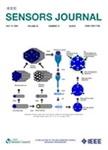版权所有:内蒙古大学图书馆 技术提供:维普资讯• 智图
内蒙古自治区呼和浩特市赛罕区大学西街235号 邮编: 010021

作者机构:Heriot Watt Univ Inst Sensors Signals & Syst Edinburgh EH14 4AS Midlothian Scotland Natl Inst Metrol Ctr Adv Measurement Sci Beijing 100029 Peoples R China Zhejiang Univ Coll Informat Sci & Elect Engn State Key Lab Modern Opt Instrumentat Hangzhou 310027 Peoples R China Peking Univ Sch Elect Engn & Comp Sci Beijing 100871 Peoples R China
出 版 物:《IEEE SENSORS JOURNAL》 (IEEE传感器杂志)
年 卷 期:2021年第21卷第16期
页 面:17695-17702页
核心收录:
学科分类:0808[工学-电气工程] 08[工学] 0804[工学-仪器科学与技术] 0702[理学-物理学]
基 金:U.K. Engineering and Physical Sciences Research Council (EPSRC) [EP/R024502/1] EPSRC [EP/R024502/1] Funding Source: UKRI
主 题:Accelerometers Three-dimensional printing Three-dimensional displays Sensors Capacitance Fabrication Programmable logic arrays Conductive composite material integrated 3D printing machine learning sensor
摘 要:MEMS (Micro Electromechanical System) sensors have been increasingly used to detect human movements in health monitoring applications. Usually, a full cycle of design and fabrication of a MEMS sensor such as an accelerometer requires highly professional understanding of device functions and expertise in microfabrication process. However, the advent of internet of things (IoT) brings a large demand for low-cost and highly customizable sensors, which requires fast fabrication and flexible design, even by the customers with limited background knowledge in the device itself. In this work, we present the development of a rapid design and fabrication workflow for accelerometers by combining an artificial neural network (ANN) based inverse design method and a one-step 3D printing fabrication technique. The one-step 3D printing fabrication approach is based on a conductive composite material, a polylactic acid (PLA) polymer with carbon black. In device design, trained bidirectional ANNs were designed to predict the device performance from given design parameters and retrieve the design parameters from the customer requirements of the device performance. A capacitive accelerometer was then designed based on the retrieved geometric parameters and fabricated by an integrated 3D printing process without using any additional metallization and assembly processes. With a sensitivity of 75.2 mV/g and a good dynamic response, the 3D printed accelerometer was shown to be capable of detection and monitoring of human movements. The proposed rapid design and fabrication workflow provides an effective solution to customized and low-cost MEMS devices suitable for IoT applications.